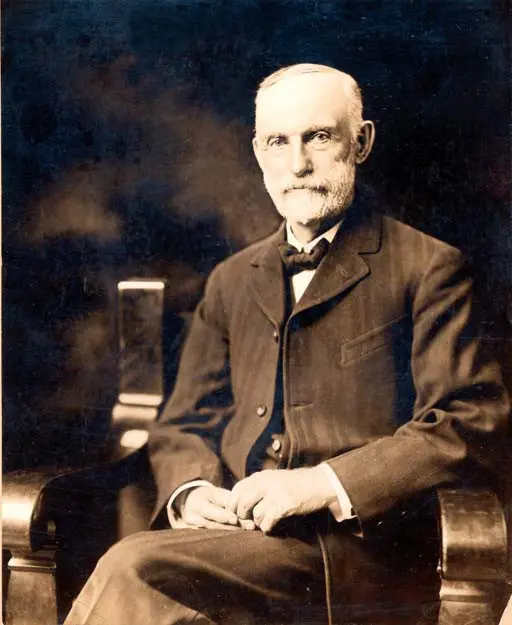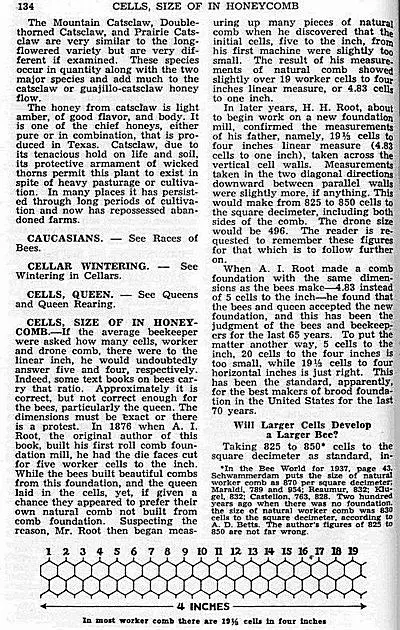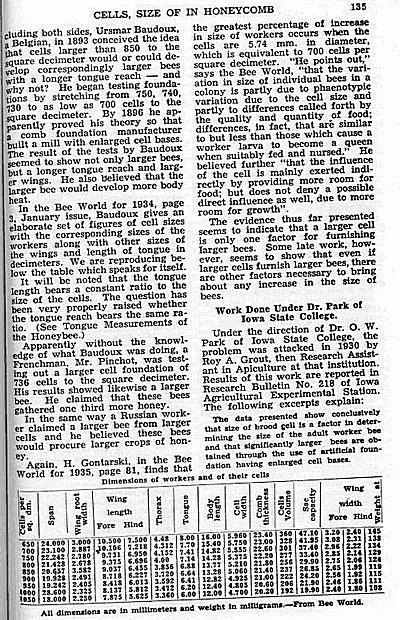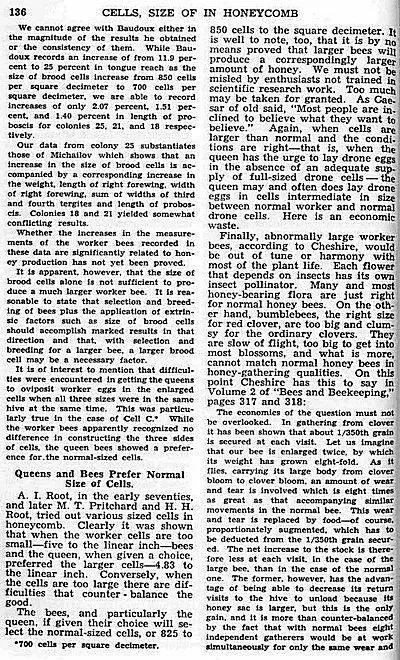Unveiling the Secrets of Cell Size in Beehives

Hey Bee Enthusiasts! ✨ Let’s take a trip back in time with A.I. Root, the trailblazer behind commercial foundation manufacturing.
This legendary beekeeper:
- Delved into the dimensions of natural worker cell sizes
- Experimented with various foundation sizes to win bee approval
- Crafted foundation for over a century
- Kept tabs on natural comb and bee size changes
A.I. Root’s insights on cell size are mind-blowing! Here’s a sneak peek:
- He wrestled with getting bees to embrace small cell size foundation before it was even a thing
- Settled age-old debates by measuring linearly across cells, ditching the diagonal versus square arguments
- Early measurements, predating any bee size tinkering, remain consistent even after foundation introduction
- The 4.83 measurement he refers to aligns with today’s USA foundation size range, around 5.21mm to 5.375mm!
- European notions of larger bees didn’t sway early foundation makers—no bigger bees or foundations for them!
Want to dive deeper? Check out these pages from the 1975 edition of the ABC and XYZ of Beekeeping. Sadly, they didn’t make it into later editions.




Location Matters
Understanding cell size means considering where you measure. In a top bar hive:
- Brood cell measurements vary from 5.4mm to 4.9mm, depending on the location
- Drone cells range from 7.29mm to 5.25mm
Impressive, right? But is our foundation too large with a worker cell size range from less than 4.6mm to 5.59mm? What are your thoughts?
For more historical cell size gems, check out David Heaf’s measurements. Are these cell sizes a product of natural evolution or human intervention?
-Buzzing with questions, D 🐝🤠
